Clancy Tucker's Blog, page 21
April 19, 2022
5 June 2022 - CRYSTAL ICE CAVE - CALIFORNIA
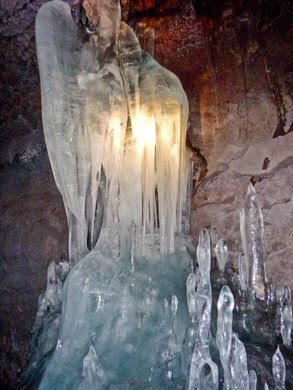
CRYSTAL ICE CAVE
- CALIFORNIA -
G'day folks,
Each winter this underground cave forms a dazzling ice palace.Way up in northern California, Lava Beds National Monument is a land scarred by the tectonic grumblings of the Medicine Lake shield volcano nearby. Millions of years of lava pouring through the land resulted in a labyrinth of 800 caves. Twenty of these caves host strange and surreal ice formations during winter, the most spectacular of which is Crystal Ice Cave. Like something straight out of a Norwegian novel, Crystal Ice Cave brims with rare ice formations that can’t help but make you say “Oooooh.”
The cave drops as deep as 150 feet below the ground and runs 960 feet long, and features towering ice stalactites, stalagmites, and two frozen waterfalls, according to the Mail Tribune. The formations are different each year, depending on how the water falls and freezes. The cave was named by Judson Dean Howard, who is credited for prodding President Calvin Coolidge to turn the caves at Lava Beds into a National Monument. The land above Crystal Ice Cave is a desert, and the drippings from the cave’s formations offer a crucial watering hole for wildlife.

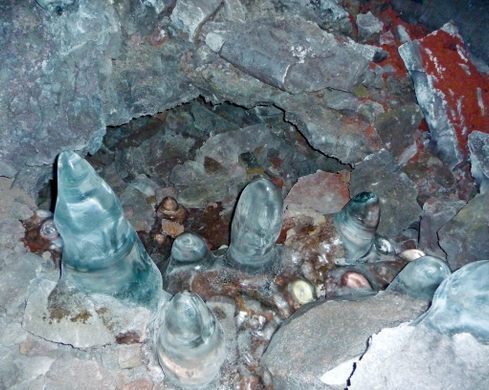
The cave is usually accessible via private tours on Saturdays from January through March, which can only be booked over the phone and tend to fill up fast, according to Gizmodo. At one point, the ice cave tours took as many as 40 people—until rangers noticed the tours caused an enormous, unnatural spike in temperature and reduced the group size to six. Would-be cavers must provide their own spelunking equipment, pass a screening for white-nose syndrome before entering the subterranean system, and be able to ascend a 50-foot long ice slope on a rope, among other hazardous physical maneuvers.
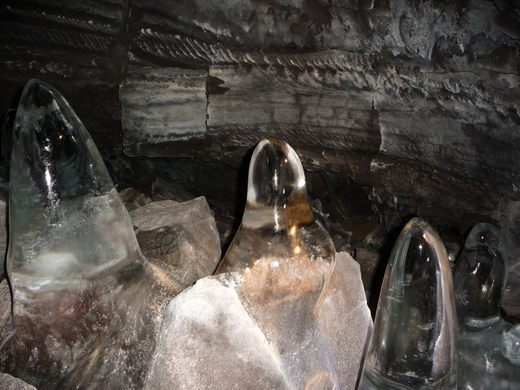
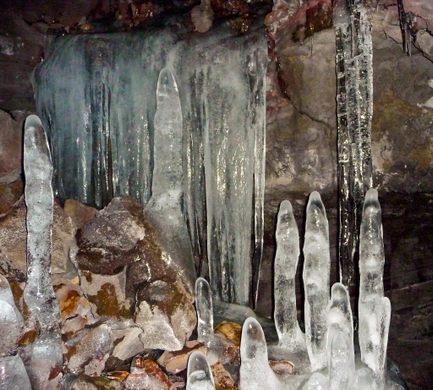
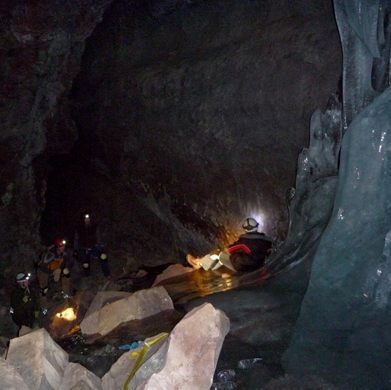
In recent years, as the area has experienced warmer winters, Crystal Ice Cave seems to be melting, according to a short video from the National Parks Service. The Parks Service did not open Crystal Ice Cave tours in 2020 due to high temperatures, which prevent the monumental ice formations from freezing and leave areas of the cave wet and too dangerous to traverse.
Lava Beds National Monument is located on the ancestral lands of the Modoc people. Some white settlers who colonized the region demanded the Modoc people be forcibly removed to the Klamath Reservation in Oregon, which had poor conditions and was also occupied by members of the Klamath, Yahooskin, and Paiute Tribes, according to a National Parks Service report. In 1870, a group of 372 Modocs left the reservation and returned to Lava Beds, taking refuge in a natural lava fortress and holding off the U.S. army for five months.

4 June 2022 - BRATISLAVA'S HIDDEN BUNKERS - SLOVAKIA
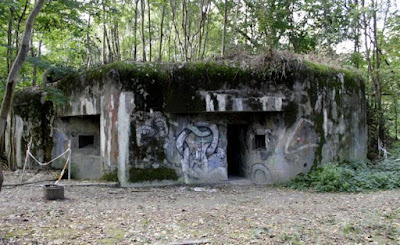
BRATISLAVA'S HIDDEN
BUNKERS - SLOVAKIA
G'day folks,
A line of disused military bunkers built to defend against Nazi invasion lies hidden on the outskirts of the city.In Petržalka, the very edge of the city of Bratislava on the western bank of the Danube, sits a string of concrete bunkers scattered across a variety of fields and woods. These are the best-preserved remnants of an expensive border defense system that was constructed throughout the country over 80 years ago.
In the 1930s, what was then Czechoslovakia invested in a line of military fortifications to defend against invasion by Nazi Germany, which by 1938 following the annexation of Austria (Anschluss), also threatened Bratislava, which sits on the Danube mere miles from the Austrian border.
At the time of building the bunkers were state of the art, but ultimately proved of little use. Under the Munich Agreement brokered between Britain, France, and Germany, Czechoslovakia was forced to give up most of its borderlands, including the bunkers. This left the country with a new, poorly defended border and soon afterward the entirety of what was Czechoslovakia fell under Nazi control.
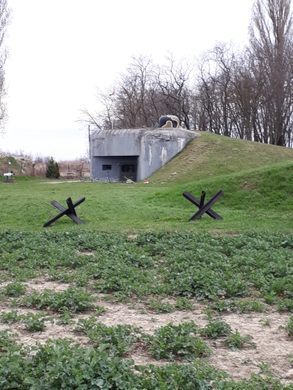
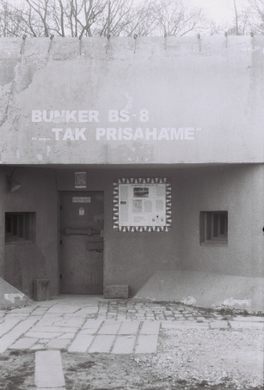

There are 14 surviving bunkers along the stretch of border. The largest and best preserved is BS-8, which is maintained as a museum by a team of dedicated volunteers. If you are lucky or make advance contact, they will give tours allowing you access inside the restored bunker. BS-8 is located next to a small World War I cemetery and a slightly incongruous picnic area and playground. Other smaller bunkers, BS-9, and BS-7 can also be found nearby.
Standing at BS-8 you can see a nearby road across a field; this road is where the border with Austria lies. Standing at the bunker looking across the perfectly flat fields, you get a sense of the vulnerability the young nation that created these bunkers must have felt.
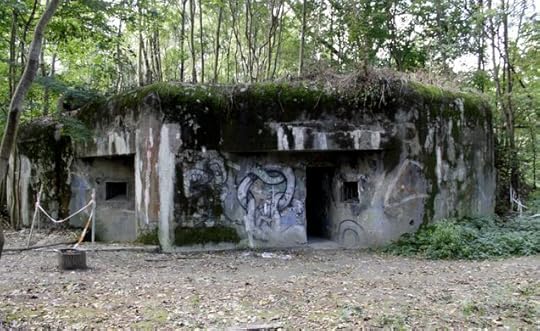
3 June 2022 - THE CHOCOLATE HILLS OF BOHOL, PHILIPPINES

THE CHOCOLATE HILLS
OF BOHOL, PHILIPPINES
G'day folks,
Welcome to Bohol's mysterious brown hills.
Were you to fly over Bohol Island in the Philippines during the dry season, you might notice what looks like thousands of chocolate kisses protruding from the terrain.
These mysterious conical mounds are known as the Chocolate Hills. There are approximately 1,268 individual hills, their heights ranging from 100 to 160 feet, though the highest is almost 400 feet high. The hills, which are almost all symmetrical, consist of grass-covered limestone and turn brown during the dry season.

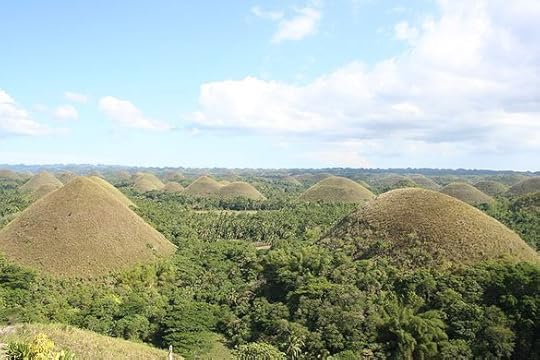
Despite the abundance of hills, it is unclear how they were formed. There are multiple geological explanations ranging from oceanic volcano activity to limestone weathering. A recent theory is that an ancient volcano self-destructed and chunks of it were dispersed over the region.
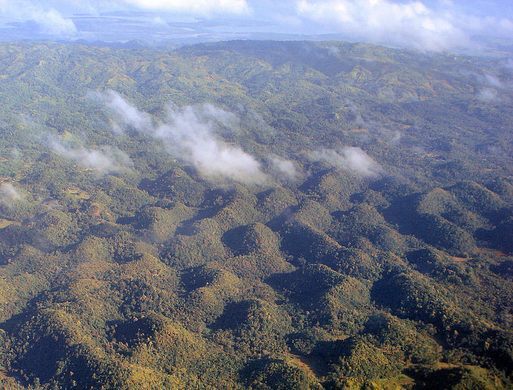

Numerous legends and tales also exist to explain the Chocolate Hills. One is about a giant buffalo who came and wreaked havoc in the region, eating and destroying all the crops. As an act of vengeance, locals left out spoiled crops. When the buffalo ate them it got sick and left mounds of feces in its wake, bringing new meaning to the name “Chocolate Hills.”
April 16, 2022
2 June 2022 - ORIGINS OF THE TAJ MAHAL
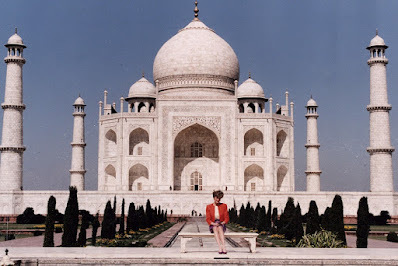
ORIGINS OF
THE TAJ MAHAL
G'day folks,
Mumtaz Mahal, the beloved wife of an emperor died in 1631, leaving her husband consumed with grief. So much so that he spent 22 years constructing an incredible monument on her burial ground – the magnificent Taj Mahal.
He was Shah Jahan who entered the world in 1592 at Lahore, then capital city of the Mughal Empire, as Prince Shihab-ud-din Muhammad Khurram.
He was the son of Jehangir, the fourth Mughal emperor of India and the grandson of Akbar the Great. The name Khurram, meaning "joyful", was given to the prince by Akbar.
He became an impressive military leader but also a renowned architect. Among the many titles that he received is one that seems today to be most appropriate: "The Builder of the Marvels”.
Shah Jahan’s life would change forever in 1607 when he was just fourteen years old. The annual Meena Bazaar was being held in the imperial city of Agra when the ladies of the palace, including Mughal princesses, would hold a mock market place and set up stalls to sell goods.
The Mughal princes and other royalty and noblemen would indulge in playful banter with the stallholders and perhaps buy a few articles.
According to legend, 14-year-old Shah Jahan was wandering through the bazaar when he spotted a girl selling silk and glass beads. It was love at first sight and the prince immediately went to his father and declared that he wanted to marry the girl.
She was Arjumand Banu Begum, a 15-year-old Muslim Persian princess. The couple began an intense relationship and were married five years later – the date chosen by court astrologers.
Shah Jahan’s father died in 1628 and the son then became Emperor. Immediately, the new ruler bestowed upon his wife the title of Mumtaz Mahal, roughly meaning the “Jewel of the Palace”.
Although Shah Jahan had other wives, his relationship with them, according to the official court chronicler Qazwini, "had nothing more than the status of marriage. The intimacy, deep affection, attention and favour which His Majesty had for the Cradle of Excellence (Mumtaz) exceeded by a thousand times what he felt for any other".
She was indeed his inseparable companion and even went with him on military campaigns.
Tragically, in 1631, complications set in while Mumtaz Mahal was giving birth to their 14th child, and she died. She was 38 years old.
Shah Jahan was so consumed with grief that he ordered the court into mourning for two years. Then he began the task of erecting the world's most beautiful monument in memory of his beloved.

Construction of the Taj Mahal over Mumtaz Mahal’s burial site at Agra took 22 years using the labour of about 20,000 men and cost Shah Jahan most of his royal treasury. The bill was estimated at the time to be about 32 million rupees, which today would be around 70 billion rupees (about U.S. $916 million).
Different types of marble were used and brought to the site from various regions and countries including Rajasthan, Punjab, China, Tibet, Afghanistan, Sri Lanka, and Arabia. More than 1,000 elephants were procured for the marble’s transportation.
As many as 28 varieties of semi-precious and precious stones were used to adorn the Taj with exquisite inlay work. And the colour of the monument appears to change at different times of the day.
Now a Unesco World Heritage site, the Taj Mahal counts among the Seven Wonders of the World, attracting up to four million visitors a year. English poet Edwin Arnold described it as "not a piece of architecture, as other buildings are, but the proud passion of an emperor's love wrought in living stones.”
When Shah Jahan died in 1666, aged 74, his body was placed in a tomb next to that of Mumtaz Mahal inside the monument. Apart from the Taj Mahal, other noble structures associated with his name include the Red Fort of Delhi, Jama Masjid of Delhi, Section of Agra Fort, the Wazir Khan Mosque and the Moti Masjid in Lahore, Pakistan.
* The Taj Mahal hit international headlines in 1992 when it was visited by Diana, Princess of Wales. She and her husband, Prince Charles, were on an official tour of India and it was expected that the royal couple would visit the beautiful monument together. But amid rumours swirling about the state of their marriage, Diana turned up alone. Charles was said to be “at a business meeting”.
With 30 to 40 photographers gathered, Diana sat on a bench (now known as Lady Di’s Chair) while her picture was taken in front of the Taj Mahal. The irony was lost on no-one as the image of a princess, alone at a glorious monument to love, was flashed around the world.
Later that year Diana and Charles officially separated.
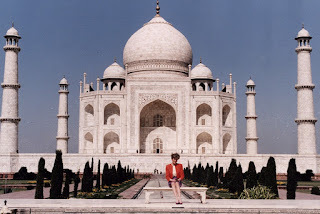
Clancy's comment: A famous monument for a famous princess.
I'm ...

April 10, 2022
7 June 2022 - AMAZING ROCK ART in EAST TIMOR.
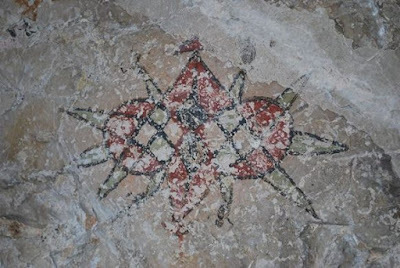 AMAZING ROCK ART in EAST TIMORG'day folks, Ancient images hide within this park's caves.
AMAZING ROCK ART in EAST TIMORG'day folks, Ancient images hide within this park's caves. Rock art found at Nino Konis Santana National Park consists of paintings created using different colors, but with some rare exceptions, only those drawn in black or dark brown are visible to the naked eye. Among the motifs portrayed in these caves are boats, animals, birds, people, the Sun, stars, geometric patterns, and figures featuring a mixture of human and animal traits.
The first caves within the park were explored and studied in 1966. The last nine caves were explored and studied for the first time in 2000. Considering the thick vegetation and rugged terrain, it would not be unfathomable to speculate that more rock art is yet to be found.


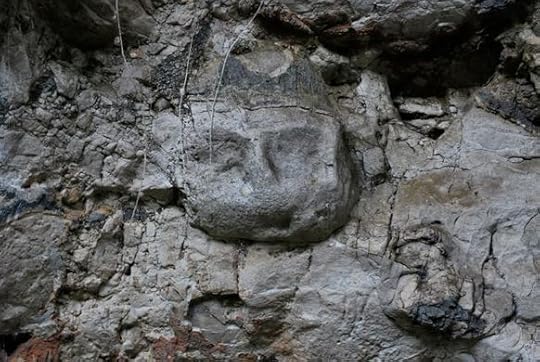
Carbon dating tests run on human-made findings from the Lene Hara cave show that humans have been living in this region for at least 30,000 years. The dating of the paintings, however, has proven to be more controversial. Some scholars initially claimed that the paintings date back to the Neolithic Age (about 12,000 years ago), but this view has been challenged by more recent research that suggests these images are from as recent as 2,500 years ago.
These rock paintings exhibit techniques, styles, and motifs also present on other islands in the South Pacific, including Australia. Techniques and styles can travel a long way, adapting to specific and diverse cultural contexts. Yet, the similarities in motifs suggest that in spite of the significant distance among them, these islands may have shared the same symbolic system. If this is the case, these societies must have had more interchanges with one another than previously thought.
1 June 2022 - HISTORICAL CHUMASH PAINTED CAVE, CALIFORNIA
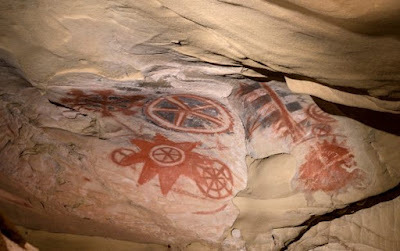
HISTORICAL CHUMASH
PAINTED CAVE, CALIFORNIA
G'day folks,
Colorful Native American paintings are hidden within this small cavern.Hidden along a narrow, steep, and windy road is a tiny piece of the Chumash Native American history preserved for visitors to view. The state park is small, and doesn’t look like much at first glance. But peek through the bars blocking the entrance to this cave, and you’ll discover striking traces of the past.
This little cave is filled with preserved art that was created long before Europeans settlers moved into California.
The colorful symbols are a bright contrast with the pale sandstone surface. Though the meaning of the images is unclear, it’s believed the artwork is related to Chumash cosmology. Though the exact age of the rock art is unknown, anthropologists estimate that the paintings were created in the 1600s, if not earlier.


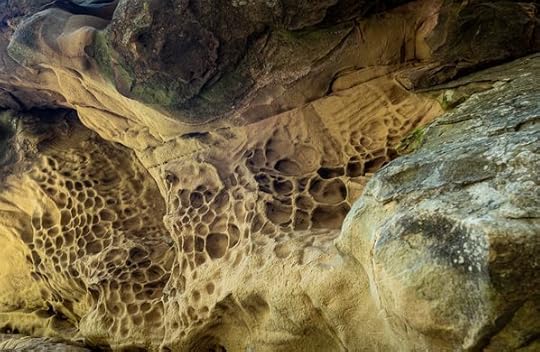

The Chumash and Gabrielino-Tongva peoples were the first human inhabitants of the Channel Islands and Santa Monica Mountains areas in California. Some archaeological sites connected with the tribes and their ancestors date back as far as 15,000 years.
There is evidence that the settlers have known about this spot for years, as early migrants left their mark in the form of graffiti near the Indigenous artwork. Bars were installed over the entrance and the area was declared a state park to prevent further damage.
April 9, 2022
31 May 2022 - FORT STACHELBERG - TRUTNOV, CZECHIA
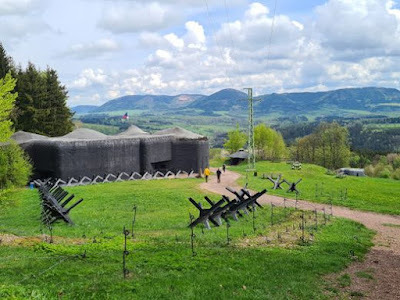
FORT STACHELBERG
- TRUTNOV, CZECHIA -
G'day folks,
This fortress was designed to prevent a Nazi invasion but was never used.From 1935 to 1938, Czechia began building fortifications on its border with Nazi Germany. Most of these fortifications were located in the so-called Sudetenland, the mountainous region between Czechia and Germany which was mostly inhabited by ethnic Germans.


Of course, the Sudetenland was famously surrendered to Hitler in 1938 under the British policy of appeasement, meaning that these fortifications were never finished and ultimately never used. Nevertheless, the structures continue to stand as an open-air museum and an interesting hiking area, complete with a weekend Biergarten overlooking the Sudety low-mountain range.
Most of the interesting sites are in the core area of the fortress, a hilltop area open to the public. Although most of the smaller bunkers are free to visit, the largest contains a museum which is accessible for a small fee. Several smaller bunkers can also be found in the woods and hillsides, along with a popular hiking and biking path on the other side of the street.
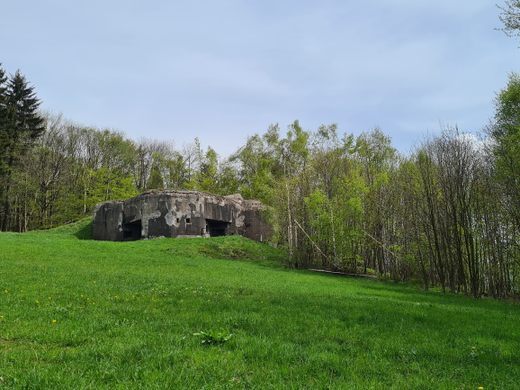
Clancy's comment: Countless precautions like these were built for protection.
I'm ...

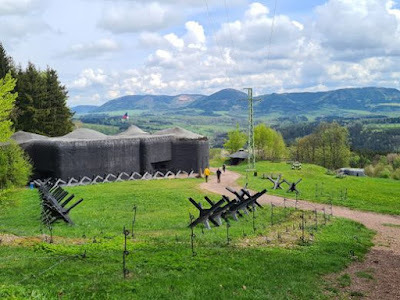
April 8, 2022
30 May 2022 - ORIGINS OF THE SALVATION ARMY
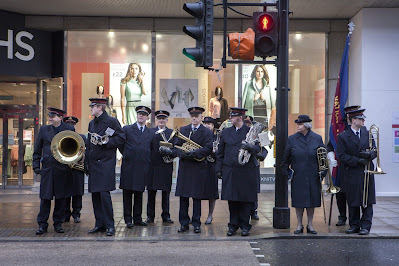
ORIGINS OF THE
SALVATION ARMY
G'day folks,
The distinctive Salvation Army women’s bonnets were worn for the first time in 1880 in a procession through London’s East End.
Fifteen years earlier, Methodists William and Catherine Booth had decided that the changes they wanted to make in society could not be achieved simply by delivering sermons from a church pulpit: they needed to get amongst the people on the streets and offer direct help.
Their first meetings were held outside the Blind Beggar pub in East London in June, 1865, which led to the birth of a new organisation, The Christian Mission. It grew rapidly and in 1878 the name was changed to the Salvation Army, the organisation adopting a quasi-military structure with officers and members wearing a military-style uniform.
This came about through the belief that converts became soldiers in an army, fighting against human suffering. They were at war – on the side of the poor and destitute.
Their work included providing shelters for the homeless, running soup kitchens, setting up rescue homes for women escaping domestic abuse and prostitution, and even offering a family tracing service.
The Salvation Army also campaigned for better working conditions and was responsible for the world’s first labour exchange – opened in 1890 to help people find work.


The United States was the start of the Army’s worldwide expansion when in 1879 Salvationist Amos Shirley travelled to Philadelphia with his family. By late 1880 operations had been extended to Australia, the hungry of Adelaide being offered food.
The following year Catherine Booth-Clibborn, daughter of the founders, moved to France and started to hold meetings in Paris. Now expansion really took off and by 1883 Salvationists were working in Switzerland, Sweden, Sri Lanka, South Africa, New Zealand and Canada.
Indeed, as a national charitable organisation that employs more than 10,000 people in over 400 communities across the country, the Salvation Army is today Canada’s largest non-governmental provider of social services.
But back in the 1880s, new types of social work began. In 1883 a prison-gate home was opened in Melbourne, Australia, to support prisoners re-entering the community, and in 1885 the age of consent was raised in the UK after a campaign by the Army.
The first Salvation Army hospital was opened in 1897 at Nagercoil, India. There are now tens of hospitals worldwide, plus thousands of schools, health projects, sanitation work and other social services.
William Booth was born in the “Robin Hood city” of Nottingham in 1829. By the time of his death in 1912, Salvationists were working in 58 countries, while today the figure is more than 130.
The Army has more than 1.5 million members dedicated to bringing salvation to the poor, the destitute, and the hungry “by meeting their physical and spiritual needs.” In addition, thousands of volunteers around the world help the cause.
Apart from their many other activities the volunteers run what is known in the UK as charity shops, and in the US as thrift stores. These retail outlets raise considerable funds for the Army’s charitable activities.
* In March, 1966, the Blind Beggar pub was back in the news over an incident that could not have been further removed from its Salvation Army connection. Gangster Ronnie Kray shot dead a member of a rival gang who was sitting at the bar. The murder was one of the crimes that led to Kray being sentenced to life imprisonment.

Clancy's comment: I recall seeing them and hearing their music at Christmas.
I'm ...


April 6, 2022
29 May 2022 - NELSON MANDELA AND 27 YEARS OF PRISON

NELSON MANDELA
AND 27 YEARS OF PRISON
G'day folks,
Born in 1918, Nelson Mandela belonged to a royal family of the Xhosa-speaking Thembu tribe in the South African village of Mvezo, where his father was chief.
After he died in 1927, nine-year-old Mandela was adopted by a high-ranking Thembu regent who saw his young ward as a future tribal leader.
Their relationship came to an end some years later when Mandela learned that his guardian had arranged a marriage for him. Rather than go through with it he fled to Johannesburg and took a job as a night watchman.
It was a sad turn of events for a man who had been the first in his family to receive a formal education. Mandela — then known by his birth name, Rolihlahla — had completed his primary studies at a missionary school.
At the time it was common practice for teachers to give African students English names. So when he was seven years old Rolihlahla became Nelson. In later years, as a sign of respect, many people referred to him as Madiba, his Xhosa clan name.
Mandela may have needed the night watchman job to earn money but he moved on to study law at Johannesburg’s University of the Witwatersrand, and qualified as a lawyer in 1942 at the age of 24.
Two years later, disturbed by the racial prejudice that had become rife in South Africa, he joined the African National Congress (ANC), a political group seeking equal rights for black people.
It faced a monumental challenge in its struggles after the 1948 election victory of the Afrikaner-dominated National Party, which introduced its formal system of racial classification and segregation — apartheid (separate development).
While maintaining white minority rule, apartheid meant that by law the basic rights of non-whites were heavily restricted. Not only were they unable to serve in government, they weren’t even allowed to live in the same areas as whites or go to the same schools. They could not share a table in a restaurant with whites, nor sit next to them on a train or bus.
In retaliation, the ANC launched its Campaign for the Defiance of Unjust Laws and called for boycotts, strikes, civil disobedience and other non-violent protests. Mandela travelled across the country to organise protests.
His activities became too much for the authorities so in 1956 he was arrested on a trumped-up charge of treason. Mandela was held at a prison in Johannesburg for five years before the charge was dropped and he was released.

The ANC, which became a banned organisation while Mandela was behind bars, had always advocated peaceful protest. But after he came out of jail Mandela and other ANC leaders decided to set up a secret military group called Umkhonto we Sizwe, or Spear of the Nation.
It was a fateful decision. In 1963, the police found weapons and documents belonging to the secret group, which led to the arrest of Mandela and seven others. They were charged with plotting to overthrow the government and each was sentenced to life imprisonment.
Mandela would spend the next 27 years in jail, initially on Robben Island, seven miles off the coast of Cape Town. After 18 years he was transferred to the first of two inland prisons.
Whilst behind bars he was quoted as saying: “I have cherished the ideal of a democratic and free society in which all persons live together in harmony and with equal opportunities. It is an ideal which I hope to live for and to achieve. But if needs be, it is an ideal for which I am prepared to die.”
Over the years he became one of the world’s most famous prisoners and there were international campaigns to ‘Free Nelson Mandela’. At the same time South Africa came under increasing pressure to abolish the apartheid system and by the mid-1980s it found itself among the world’s pariah states, the subject of economic, sporting and cultural boycotts that affected almost every aspect of life.
It all came to a head in 1989 when President (Pieter Willem) “P.W.” Botha suffered a stroke. The reforming (Frederik Willem) “F.W.” de Klerk, who had held secret talks with Mandela in his cell, took his place – first as party leader, and later as President.
Knowing that the apartheid system was leading to both economic and political bankruptcy, de Klerk was bent on reform. As President, he released all important political prisoners in 1990, including Mandela, and lifted the ban on the ANC. His government then began systematically to dismantle apartheid.
Mandela became President of the ANC in 1991 and worked with de Klerk in bringing an end to apartheid while introducing equal rights for all. They shared the Nobel Peace Prize in 1993 “for their work for the peaceful termination of the apartheid regime, and for laying the foundations for a new democratic South Africa."
The country’s first all-race elections, held in April 1994, saw the ANC win a majority of seats in the new National Assembly. Mandela became South Africa’s first black President with de Klerk as his deputy in a government of national unity.
An iconic figure around the world symbolising peace, equality and determination, Mandela retired from politics in 1999 and set out to live a quiet life with his third wife, Graça. He said: “I have retired, but if there's anything that would kill me it is to wake up in the morning not knowing what to do.”
A lung infection brought his days to an end and he died in December 2013 at the age of 95. The world mourned his loss.
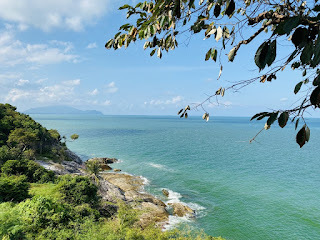
Clancy's comment: What an interesting life.
I'm ...


28 May 2022 - ANNE FRANK'S DIARY

ANNE FRANK'S
DIARY
G'day folks,
Anne Frank received a present on her 13th birthday. It was a diary and the entries she would go on to make in it would make her tragically short life an inspiration to millions.
Her first words, written on that day, were: “I hope I shall be able to confide in you completely, as I have never been able to do in anyone before, and I hope that you will be a great support and comfort to me.”
The daughter of a Jewish industrialist, Anne was born in 1929 as Annelies Marie Frank at Frankfurt, Germany. Her father, Otto, was a German businessman who served as a lieutenant in the German army during the First World War.
But amid rising anti-Semitism and Nazi persecution of Jews, Otto moved his family to Amsterdam in the autumn of 1933. The Franks were among 300,000 Jews who fled Germany between 1933 and 1939.
In Amsterdam Otto ran a company called Opekta that sold spices and pectin used in the manufacture of jam.
Anne and her sister Margot went to a local school and were relatively happy. That began to change on 10 May 1940 when the German army invaded the Netherlands.
Two years later, on 5 July 1942, Margot received an official summons to report to a Nazi work camp. Her father was having none of it so the next day the Frank family went into hiding, moving into a secret annex in the offices of Otto's company.
Hiding alongside them were another Jewish family and, later, a Jewish dentist. They all spent two years in this hiding place, never once stepping outside. The entrance to the annex was concealed by a large bookcase.
Four of Otto’s loyal employees brought food and other necessities as well as news about the outside world. They knew that if they were caught they would be executed for helping Jews, but they did it anyway.
Anne passed much of the time reading and writing in her diary. She started each entry with the words “Dear Kitty”, an imaginary friend. Written over the course of two years, the diary details the time that her family spent in hiding as well as the feelings of a frustrated and “ordinary” teenager, struggling to live in a confined space.
For all its passages of despair, the diary is essentially a story of faith, hope and love in the face of hate. On 15 July 1944 Anne wrote: “It's difficult in times like these: ideals, dreams and cherished hopes rise within us, only to be crushed by grim reality. It's a wonder I haven't abandoned all my ideals, they seem so absurd and impractical. Yet I cling to them because I still believe, in spite of everything, that people are truly good at heart.
“It’s utterly impossible for me to build my life on a foundation of chaos, suffering and death. I see the world being slowly transformed into a wilderness, I hear the approaching thunder that, one day, will destroy us too, I feel the suffering of millions.
“And yet, when I look up at the sky, I somehow feel that everything will change for the better, that this cruelty too will end, that peace and tranquility will return once more. In the meantime, I must hold on to my ideals. Perhaps the day will come when I’ll be able to realise them!”
Anne’s suffering was to take a decisive plunge on the morning of 4 August 1944 when the Gestapo stormed into the secret annex and arrested everyone inside. For years it was believed that someone called the Germans and told them that Jews were living in the Opekta premises.
However, the identity of this alleged caller was never confirmed and a later theory suggests that the Nazis may have discovered the annex by accident while investigating reports of ration-coupon fraud and illegal employment at Opekta.
The occupants of the annex were taken to a transit camp in the Netherlands. Because they were in hiding when arrested they were considered to be criminals and were punished with hard labour.

Then it was on to the notorious Auschwitz concentration camp in Poland. Upon arrival at Auschwitz, all men were separated from their families and all prisoners considered unfit for work were sent to the gas chambers, along with everyone under the age of fifteen. Anne had turned fifteen three months before being captured so she was spared.
Women and girls not selected for immediate death – Anne being one of them – had to strip naked and were then disinfected. Their heads were shaved and an identity number tattooed on their arms. Anne and Margot spent several months enduring hard labour at Auschwitz, lifting heavy stones and cutting rolls of turf.
During the winter of 1944, the two sisters were transferred to Bergen-Belsen concentration camp in Germany, without their mother, Edith, who fell ill and died of hunger at Auschwitz.
At Bergen-Belsen diseases such as typhoid fever raged through the camp and in early 1945 a typhus epidemic killed about 17,000 prisoners including, it is believed, Anne and Margot – just a few weeks before the camp was liberated by British forces. The exact date of Anne’s death is not known but it is thought she died in either February or March of that year.
Otto was held at Auschwitz until its liberation in January 1945 and afterwards returned to Amsterdam, learning of his wife’s death en route. He learned of his daughters’ deaths in July 1945 after meeting a woman who had been at Bergen-Belsen with them.
Following the arrest of those in the annex, Anne’s diary was retrieved by Miep Gies, one of the trusted friends who had helped the Franks during their time in hiding. Gies gave the diary to Otto in July 1945 following confirmation of Anne’s death by the Red Cross.
Otto eventually gathered the strength to read it. He was awestruck by what he read and later had it published. "There was revealed a completely different Anne to the child that I had lost," he wrote in a letter. "I had no idea of the depths of her thoughts and feelings."
Published as The Diary of a Young Girl, the work has been translated into as many as 70 languages and more than 30 million copies.
Anne Frank's diary endures, not only because of the remarkable events she described, but due to her extraordinary gifts as a storyteller and her indefatigable spirit through even the most horrific of circumstances.

Clancy's comment: Reading her diary inspired me to visit her home in Amsterdam, but my journey did not stop there ...
I'm ...





